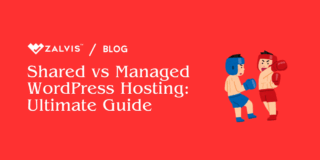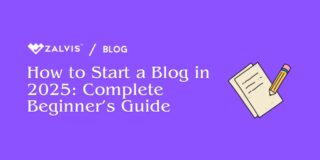Blogging vs YouTube is one of the biggest debates for content creators in 2025, especially in the AI-driven digital landscape. It is now a complex strategic calculation shaped by the seismic shifts of the creator economy, the pervasive influence of artificial intelligence, and new platform governance paradigms. This report provides an exhaustive analysis of this landscape, offering a strategic framework for creators, marketers, and entrepreneurs to navigate their platform choices and business models in the years ahead.
The creator economy has matured into a dominant media force, projected to be worth nearly half a trillion dollars by 2027. However, this explosive growth has created a hyper-competitive, “winner-take-all” environment where a widening income gap leaves a growing majority of creators earning less than $15,000 annually. Success is no longer defined by platform-specific metrics but by the ability to build a diversified, brand-centric business empire, a trend exemplified by top earners who leverage their online fame to launch off-platform ventures.
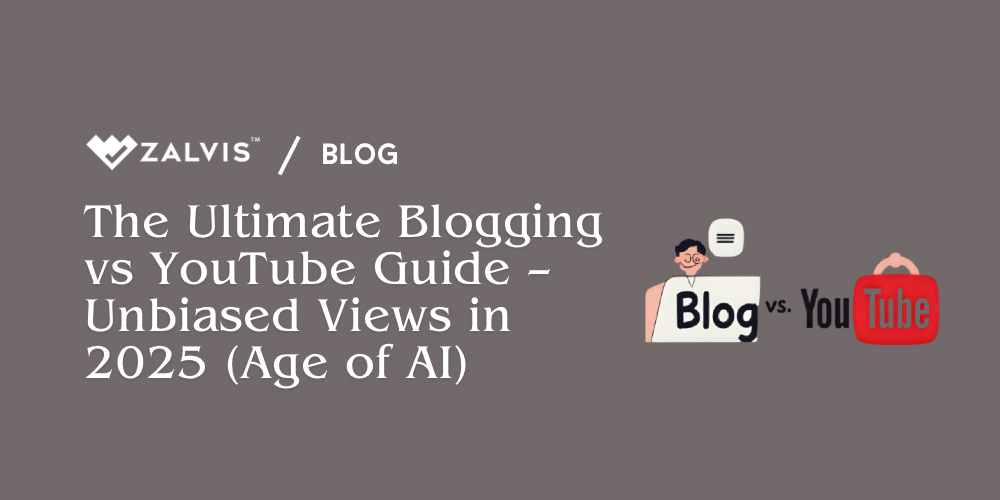
In this new era, AI acts as both a powerful catalyst and a formidable gatekeeper. It offers unprecedented productivity gains, with 80% of bloggers and a significant number of YouTubers integrating AI into their workflows for everything from ideation to post-production. Yet, this has also flooded platforms with generic content, prompting a market-wide pivot towards authenticity. Both Google and YouTube have responded with new governance policies that algorithmically prioritize and reward “proof of human value”—content demonstrating genuine experience, expertise, and creative storytelling.
This analysis concludes that while YouTube offers unparalleled potential for audience growth and engagement, a self-hosted blog remains the indispensable strategic cornerstone of a resilient and sovereign creator business. It provides full ownership of the platform and audience, insulating the creator from the inherent volatility and policy risks of third-party platforms. The optimal strategy for long-term success is not an “either/or” proposition but a synergistic “both” approach. By leveraging each platform’s unique strengths and using AI to streamline content repurposing, creators can build a powerful omnichannel presence. This report will demonstrate that this integrated model, with the blog as the central hub, is not only the most resilient but is now more achievable than ever before.
I. The 2025 Creator Economy: A New Media Paradigm
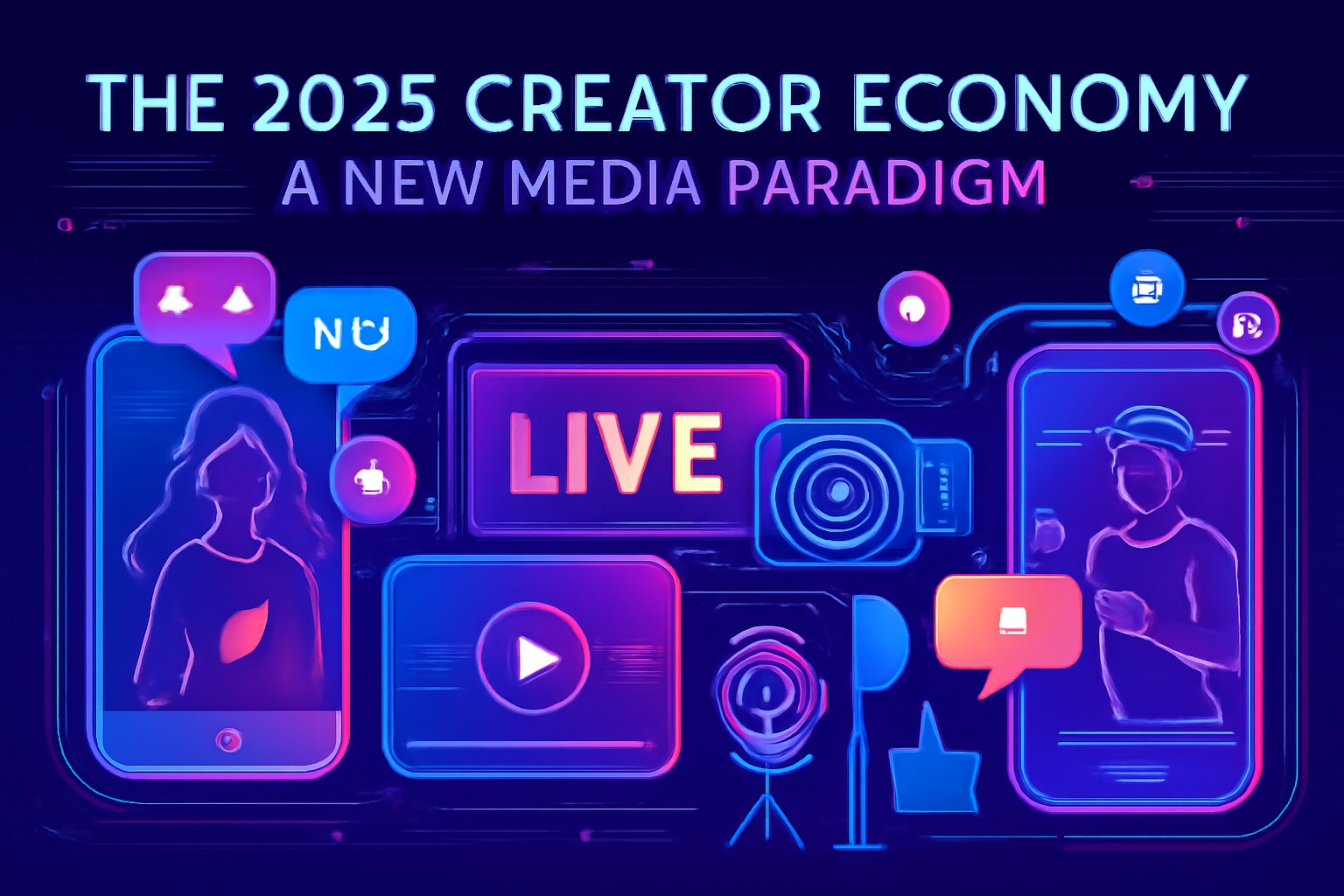
The contemporary digital landscape is defined by the ascendance of the creator economy, which has transitioned from a niche market into a global economic powerhouse. Understanding its scale, key players, and underlying dynamics is essential for any creator formulating a strategy for 2025 and beyond. This is no longer an alternative career path; it is the new media.
Market Scale and Growth Trajectory
The creator economy has achieved a scale that rivals and, in some cases, surpasses traditional media sectors. Valued at over $250 billion in 2024, the market is on an aggressive growth trajectory, with Goldman Sachs projecting its value to nearly double to $480 billion by 2027.
Other estimates suggest it could reach an astonishing $528.39 billion by 2030. This expansion is not merely speculative; it is fueled by a fundamental and irreversible shift in advertising expenditure.
For the first time, more than half of all content-driven advertising revenue is flowing to user-generated content (UGC) platforms like YouTube and TikTok, rather than to professionally produced content from traditional studios and media companies.
This monumental transfer of capital signals that brands now recognize individual creators as primary media channels, essential for reaching modern consumers.
The Rise of the Creator-Entrepreneur
The apex of the creator economy is no longer occupied by “influencers” who simply monetize their reach through sponsored posts. The most successful and highest-earning individuals have evolved into what can only be described as “powerful founders, brand builders, and media moguls”. An analysis of Forbes’ 2025 Top Creators list reveals a consistent pattern: social media fame is the launchpad, not the final destination.
Consider the top earners:
- MrBeast (Jimmy Donaldson): With estimated earnings of $85 million, his income is not solely from YouTube AdSense. His empire includes the consumer packaged goods brand Feastables, the fast-food chain MrBeast Burger, and a major streaming deal with Amazon Prime for his show, Beast Games.
- Dhar Mann: Earning $56 million, he has leveraged his success producing wholesome YouTube videos to establish a full-fledged Hollywood studio with hundreds of employees and extensive brand partnerships with giants like Meta and Google.
- Alex Cooper: Her $32 million in earnings are driven by a massive $125 million multi-year contract with radio giant Sirius XM for her podcast Call Her Daddy, a deal that followed a $60 million stint with Spotify. She has also launched Unwell Hydration, a beverage brand that is now an official partner of the National Women’s Soccer League.
This trend demonstrates a strategic diversification away from reliance on platform-specific monetization tools like AdSense, which are inherently vulnerable to algorithm shifts and policy changes. These creator-entrepreneurs treat their YouTube channels or blogs as powerful marketing funnels for their core business ventures, which exist and thrive off-platform. This fundamentally reframes the “blog vs. YouTube” debate from choosing a home to choosing the most effective primary marketing channel for a larger brand ecosystem.
Shifting Consumer Behavior
The creator economy’s growth is directly tied to profound changes in how audiences consume media. According to a 2025 Deloitte report, consumers’ daily entertainment time is fragmented across a mosaic of services, including subscription video-on-demand (SVOD), social media, gaming, and podcasts.
Younger generations, particularly Gen Z and millennials, are leading this shift. They spend significantly more time on social platforms than watching traditional TV and movies, and critically, they trust these platforms more for content discovery. A majority of younger consumers report getting better recommendations for what to watch from social media creators than from the recommendation engines of streaming services like Netflix or Hulu.
This cultural shift places YouTube, as both a social platform and the world’s second-largest search engine, at the nexus of modern content discovery and consumption.
AI as a Market Accelerator
Artificial intelligence is pouring fuel on the creator economy’s fire. The proliferation of advanced, user-friendly AI tools for video editing, scriptwriting, and content generation is dramatically lowering the barrier to entry. This technological accessibility is expected to cause the number of global creators to explode from an estimated 67 million today to around 107 million by 2030. While this democratizes content creation, it also introduces a new layer of intense competition.
This hyper-competition, amplified by AI, has led to a significant and concerning trend: an income squeeze for the “creator middle class.” While the earnings of top creators are skyrocketing, the 2025 Creator Earnings Report reveals that the proportion of creators earning less than $15,000 annually is increasing, rising to 50% in 2025 from 48% in 2023. This indicates a widening income gap and a challenging “monetization barrier” that most creators struggle to cross.
The mechanics behind this are clear. First, AI tools enable anyone to produce a baseline level of “good enough” content, flooding the market and making it harder for any single piece to stand out. Second, the same AI that powers creation also powers discovery. Sophisticated platform algorithms are designed to identify and aggressively promote the highest-engaging content, creating a powerful feedback loop that disproportionately benefits already-established stars or viral hits. The result is a market where the vast majority of creators are competing for a smaller slice of attention and revenue, even as the total economic pie grows larger. Navigating this hyper-competitive, algorithmically-driven landscape is the central challenge for creators in 2025.
II. The Foundational Choice: Blogging vs YouTube Platform Fundamentals in 2025
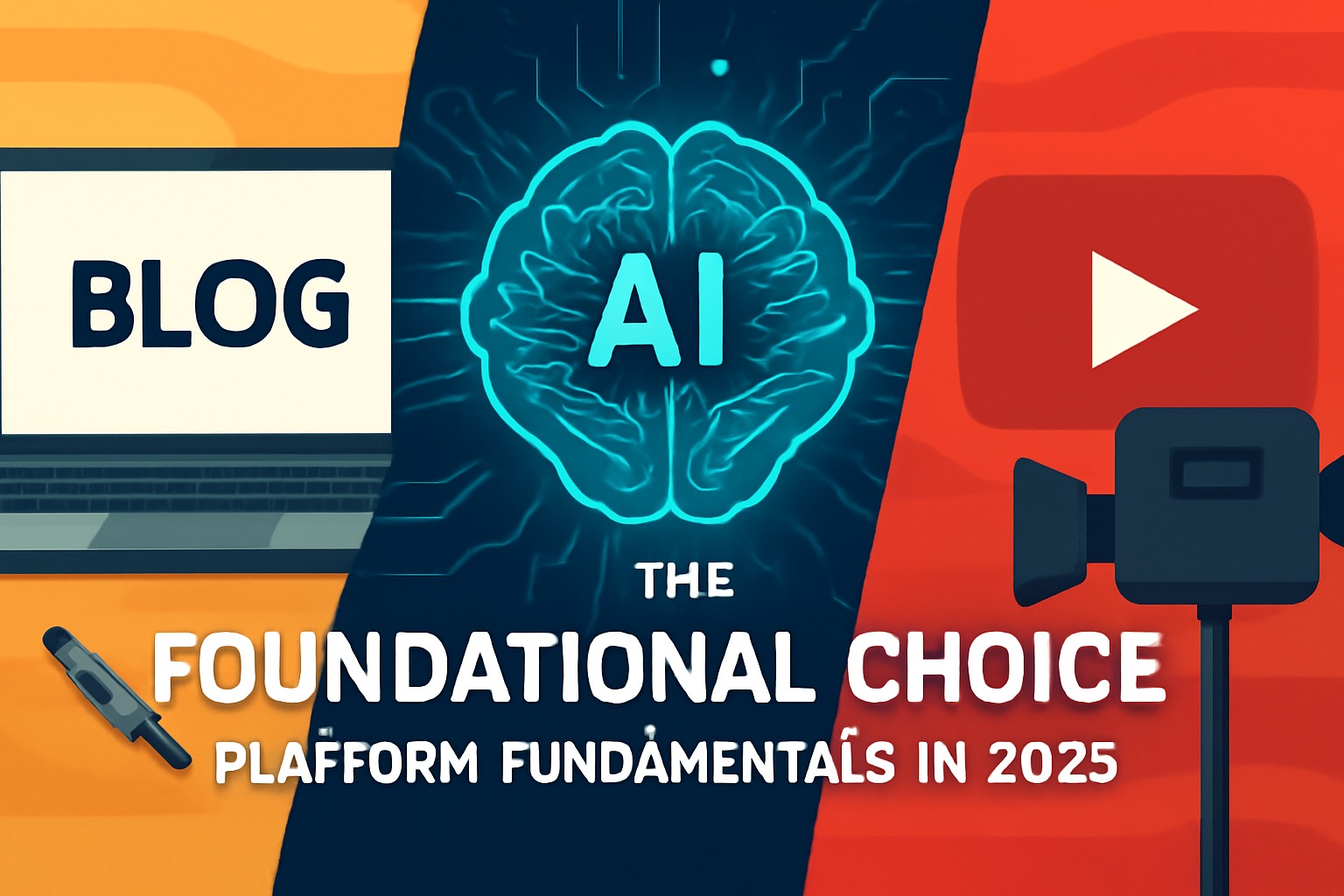
Before delving into the complexities of AI and monetization, a creator must understand the fundamental nature of each platform. The choice between a blog and a YouTube channel is a trade-off between ownership and reach, control and volatility. In 2025, these distinctions have become more pronounced and carry greater strategic weight than ever before.
Ownership, Control, and Risk
The most significant differentiator between the two platforms is the concept of ownership.
- Blogging: A self-hosted blog, typically built on a platform like WordPress, grants the creator complete and sovereign control. The creator owns the domain name, the website’s design and functionality, all the content, and, most importantly, the direct relationship with the audience through tools like email newsletters. This is a digital asset that the creator truly owns. The primary benefit of this ownership is the mitigation of platform risk. A blogger cannot be “demonetized” or “de-platformed” by a sudden, unilateral change in a third-party’s terms of service. The business is built on owned land.
- YouTube: Creating on YouTube means building a business inside a “walled garden” owned by Google. While the platform provides incredible infrastructure and access to a massive global audience, creators are ultimately tenants, not owners. They must operate within a framework of strict and constantly evolving Community Guidelines and monetization policies. YouTubers frequently report feeling “at the mercy of the platform,” where an algorithm change can slash viewership overnight or a new policy can threaten their entire income stream without recourse.
The rise of AI has made this distinction critically important. As platforms like YouTube grapple with how to manage AI-generated content, they are implementing new, often ambiguous, rules that increase the risk for creators. A blog, by contrast, serves as a strategic “safe harbor.” It is a central hub for a creator’s brand and a direct channel to their audience that is insulated from the policy volatility of third-party platforms. This makes the ownership advantage of blogging more valuable in 2025 than at any point previously.
Startup Investment & Ongoing Costs
The financial barrier to entry differs significantly between creating a basic-quality product and a professional-quality one on each platform.
- Blogging: The initial cost to start a blog is exceptionally low. A domain name and basic web hosting can be secured for as little as $70 per year. A professional appearance can be achieved on a tight budget, with premium website themes often costing less than $100 as a one-time purchase. The primary investment is time.
- YouTube: While one can technically start a YouTube channel for free using a smartphone, achieving a level of quality that can compete in today’s saturated market often requires a more substantial upfront investment. This includes a dedicated camera for high-quality video, a clear microphone for professional audio, adequate lighting to create a polished look, and potentially powerful video editing software. These costs can easily run into the hundreds or even thousands of dollars.
Creator Skillset & Workflow
The day-to-day work of a blogger versus a YouTuber requires fundamentally different skill sets and temperaments.
- Blogging: The workflow is centered on the written word. It involves research, outlining, writing, editing, and a deep understanding of Search Engine Optimization (SEO) to ensure content is discoverable. It is a process well-suited for individuals who are strong writers, enjoy in-depth analysis, and prefer an asynchronous work style that isn’t dependent on being on camera. The modern blogging workflow is also heavily augmented by AI; an estimated 80% of bloggers now use AI tools for tasks like content ideation, outlining, and first drafts, significantly speeding up the production cycle.
- YouTube: The workflow is performance-based and production-heavy. It demands skills in on-camera presentation, scripting or outlining for spoken delivery, filming, and, most time-consumingly, video editing. This path is ideal for creators who are natural performers, charismatic speakers, and have an aptitude for visual storytelling and the technical aspects of post-production. While a blogger’s time is spent with words, a YouTuber’s time is dominated by recording and editing footage.
Audience & Consumption Style
The two platforms cater to different modes of information consumption and audience preferences.
- Blogging: Text-based content allows for self-paced consumption. It is ideal for conceptual learning, where the audience wants to review complex information, skim for key details, or easily copy and paste useful data (such as code snippets or, as one source notes, “ChatGPT prompts”). Blogs attract an audience seeking depth, detail, and the ability to control the pace of their learning.
- YouTube: Video content offers cognitive ease and experiential learning. It excels in niches where showing is more effective than telling, such as software tutorials, product demonstrations, travel vlogs, or gaming walkthroughs. It builds a more immediate and personal connection, as viewers can see and hear the creator. Data shows that YouTube’s core user base is concentrated in the 25 to 35-year-old demographic, an audience comfortable with and often preferring video-first content.
To provide a clear, at-a-glance reference of these fundamental trade-offs, the following table summarizes the key attributes of each platform.
Table 1: Blogging vs. YouTube – A Comparative Framework (2025)
| Feature | Blogging (Self-Hosted) | YouTube |
| Platform Ownership | Full ownership of domain, content, and audience data. Your asset. | Platform is owned by Google. You are a content provider on their platform. |
| Platform Risk | Very low. Immune to third-party algorithm changes or demonetization policies. | High. Vulnerable to algorithm shifts, policy updates (e.g., AI content rules), and potential channel termination. |
| Startup Costs (Professional Quality) | Low. Domain and hosting (~$70/year). Premium themes are optional. | Moderate to High. Requires investment in camera, microphone, lighting, and editing software for competitive quality. |
| Core Skills | Writing, research, SEO, content management (CMS). | On-camera presence, speaking, video recording, video editing, visual storytelling. |
| Content Workflow | Asynchronous. Focus on research and writing. Can be heavily automated with AI. | Production-heavy. Focus on filming and post-production editing. Time-intensive. |
| AI Integration Level | High. 80% of bloggers use AI for ideation, drafting, and optimization. | High. AI tools for ideas, thumbnails, editing, and auto-dubbing are being integrated by YouTube. |
| Monetization Control | Full control. Direct integration of affiliate links, ad networks, and digital product sales. | Limited control. Monetization is primarily through the YouTube Partner Program (YPP), with strict rules. |
| Evergreen Content Potential | Excellent. Well-optimized posts can rank in Google for years, providing passive traffic. | Strong. “How-to” and educational videos can generate views for years via search. |
| Audience Connection Style | Builds authority and trust through in-depth, expert text. | Builds a personal, parasocial connection through visual and auditory presence. |
III. The AI Catalyst: Transforming Content Creation and Discovery
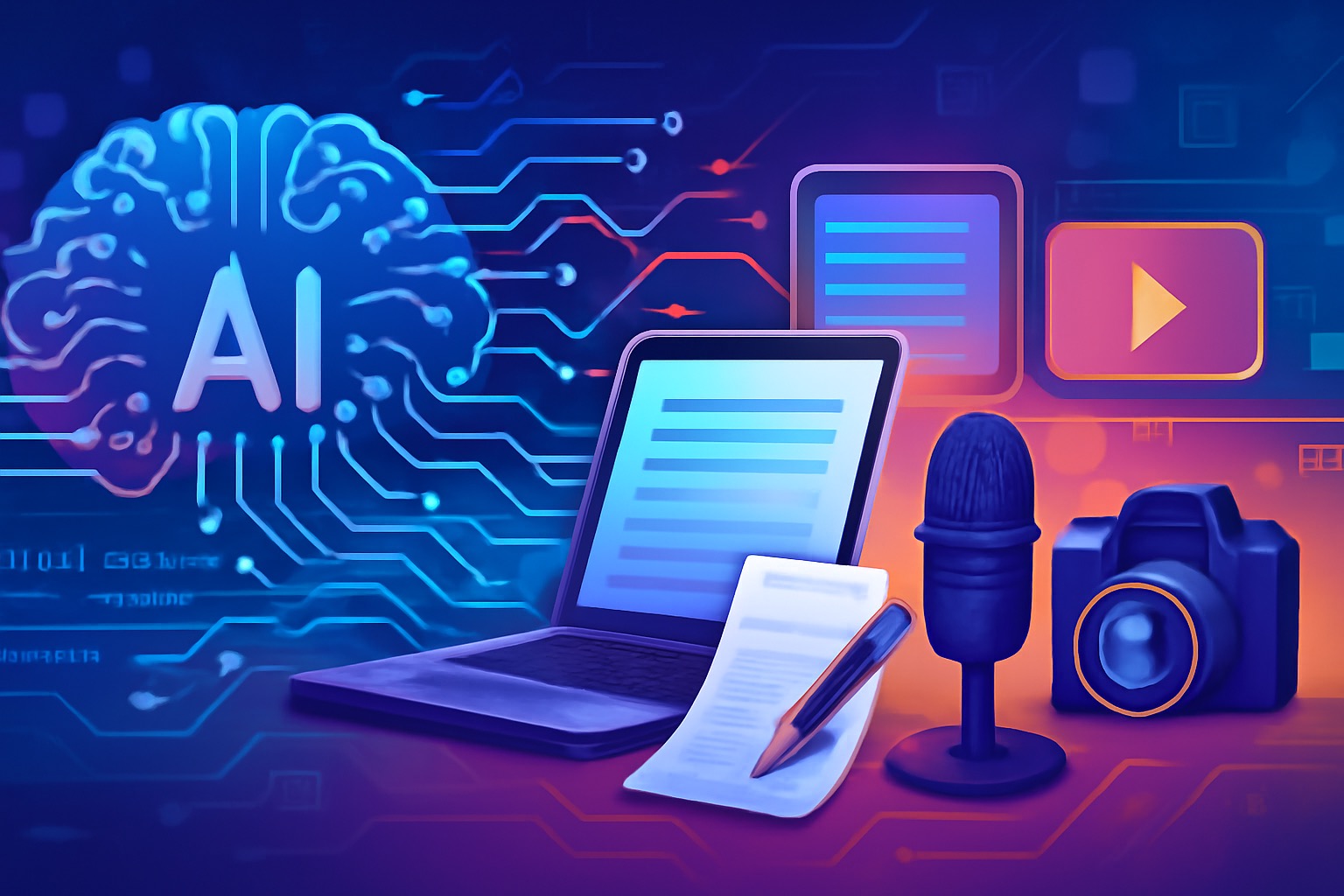
Artificial intelligence is the single most disruptive force in the 2025 content landscape. It is not merely a new tool but a fundamental paradigm shift that is reshaping workflows, audience expectations, and the very nature of discovery. For creators, AI presents a dual reality: it is an unprecedented productivity engine that can amplify their output, but it also creates a new set of strategic challenges centered on authenticity and algorithmic navigation.
AI as the Ultimate Assistant: The Productivity Boom
AI has evolved from a novelty to an indispensable co-pilot for creators on both platforms, automating tedious tasks and unlocking new efficiencies.
- For Bloggers: The impact has been transformative. An overwhelming 80% of bloggers now actively use AI in their content creation process. This goes far beyond simple grammar checks. AI tools are used for comprehensive content ideation, generating SEO-optimized outlines, and producing initial drafts. More advanced AI engines can now even perform real-time analysis of reader behavior to dynamically adjust content for hyper-personalization, with some platforms reporting up to a 25% increase in time-on-page and a 30% boost in engagement for AI-optimized content. This technology dramatically reduces the time and labor cost associated with producing high-quality, long-form written content, allowing a single writer to achieve the output of a small team.
- For YouTubers: AI is also being deeply woven into the video production fabric. YouTube itself is aggressively rolling out a suite of AI-powered tools for its creators, including features that generate video ideas, design eye-catching thumbnails, and even create virtual backgrounds and effects. Perhaps the most significant development is the impending rollout of AI-powered auto-dubbing for all YouTube Partner Program members. This tool will allow creators to translate their videos into multiple languages with minimal effort, effectively breaking down language barriers and opening up their content to a global audience at a fraction of the traditional cost of localization. Third-party tools like InVideo AI further streamline the process by handling the creation of visuals, transitions, and subtitles, acting as powerful support systems that augment, rather than replace, the creator’s vision.
The Authenticity Imperative: The Human-AI Collaboration Model
The very efficiency that makes AI so powerful has also created its biggest challenge: a crisis of authenticity. The ease of generation has led to a deluge of low-quality, generic, and “soulless” content, making audiences increasingly skeptical. One study found that 52% of consumers believe AI-generated content is likely to be misleading or incorrect.
This has triggered a powerful counter-movement in the market. Consumers, fatigued by digital perfection and robotic content, are now placing a premium on genuine human experience. They crave content that features real people, with real emotions, imperfections, and stories. Research and market trends show that content showcasing real faces, employee-generated stories (EGC), and user-generated content (UGC) consistently outperforms sterile, AI-generated visuals because it builds a foundation of trust.
This does not mean creators must abandon AI. Instead, the winning strategy in 2025 is a model of human-AI collaboration. In this model, AI is relegated to the role of an efficient assistant.
It should be used to handle the repetitive, non-creative aspects of the workflow—such as initial research, data analysis, transcribing audio, or scheduling posts—thereby freeing up the human creator to focus on the high-value tasks that only a human can perform: infusing the content with personal experience, developing a unique voice, crafting compelling narratives, and building a genuine connection with the audience.
Transparency is a cornerstone of this model; openly disclosing the use of AI and labeling content accordingly can proactively build trust with a discerning audience.
This dynamic creates a more competitive landscape where the bar for success has been raised. AI tools make it easy for anyone to reach a baseline level of quality, effectively eliminating the worst content but also flooding the market with generic, mediocre material. At the same time, AI gives expert creators “superpowers,” allowing a great writer to produce five articles instead of one or a skilled video creator to translate their work into ten languages. The result is a “squeezed middle,” where the gap between average AI-assisted content and exceptional human-augmented content widens. To succeed, creators must leverage AI not just to be competent, but to be truly remarkable.
Navigating AI-Powered Discovery: The New SEO
AI is not only changing how content is made but also how it is found. The algorithms that govern search and social discovery are now powered by sophisticated AI, and creators must adapt to this new reality.
- Google’s Evolution: For bloggers, SEO is more critical than ever, but its rules have changed. Google’s ranking systems, including the “Helpful Content Update,” now use AI to prioritize what it calls “people-first” content. The algorithm is specifically designed to identify and reward content that demonstrates high levels of E-E-A-T (Experience, Expertise, Authoritativeness, and Trustworthiness). It can now effectively differentiate between an article written from genuine, first-hand experience and one that is merely “recycled fluff” aggregated from other sources by an AI. This means that authentic, high-quality blogging is now a direct and powerful SEO signal.
- YouTube’s Algorithm: YouTube’s recommendation engine is a notoriously complex “black box” that uses deep learning models to analyze billions of data points—tracking not just views and likes, but also watch time, shares, and even user pauses—to predict and serve content that maximizes engagement. In 2025, this system has become even more advanced with the introduction of multimodal ranking. The algorithm no longer relies just on titles, descriptions, and tags. It now indexes the content of the video itself—analyzing video frames, text overlays on the screen, and the spoken words in the audio—to gain a much deeper, more contextual understanding of the video’s topic and quality. This means that for YouTubers, every single element of their video, from the words they speak to the text they display, has become a crucial SEO signal.
This evolution means that “authenticity” is no longer just a soft branding concept; it is becoming a hard, quantifiable algorithmic signal. When Google’s system rewards “genuine experience” and YouTube’s system rewards the high engagement that comes from a “genuine connection,” they are both algorithmically selecting for human-centric value. Creative choices that enhance authenticity—showing your face, sharing a personal story, demonstrating verifiable expertise—are now direct inputs that influence discovery, traffic, and ultimately, revenue.
To clarify the practical applications of AI across both platforms, the following table breaks down its role in each stage of the content workflow.
Table 2: AI’s Impact on Creator Workflows
| Workflow Stage | Blogging Applications | YouTube Applications |
| Ideation & Research | AI generates topic clusters, keyword suggestions, and analyzes competitor content. Tools like SuperAGI predict trending topics. | AI generates video ideas based on channel niche and audience data. YouTube Studio’s own tools provide brainstorming prompts. |
| Content Drafting/Scripting | AI drafts entire articles or detailed outlines based on prompts. 80% of bloggers use these tools (e.g., Jasper, ChatGPT). | AI scriptwriting tools generate video scripts or talking points. AI can summarize long articles into a video script format. |
| SEO & Optimization | AI plugins (e.g., SEOSpace) analyze text for keyword density and E-E-A-T signals. AI optimizes titles and meta descriptions. | AI analyzes video transcripts and descriptions for relevant keywords. YouTube’s multimodal ranking analyzes spoken words for context. |
| Visual Creation | AI generates custom images, infographics, and charts to complement text. | AI-powered thumbnail generators create multiple options for A/B testing. AI can create virtual backgrounds and video effects. |
| Post-Production | AI tools for grammar, style, and tone refinement. | AI-powered video editors (e.g., InVideo AI, CapCut) automate cuts, add transitions, and generate subtitles. |
| Distribution & Repurposing | AI transcribes videos into blog posts. AI summarizes articles into social media threads, carousels, and email newsletters. | AI auto-dubbing translates videos into multiple languages. AI tools (e.g., Munch) identify viral moments to clip for Shorts/Reels. |
IV. Navigating the New Rules: Blogging vs YouTube Platform Governance and Monetization Policies

The proliferation of AI-generated content has forced platforms to erect new guardrails to protect the integrity of their ecosystems and the value of their advertising markets. In 2025, understanding and adhering to these new rules of governance is not optional; it is a prerequisite for sustainable monetization, particularly on YouTube. These policies, while distinct, are converging around a single, powerful principle: the demand for demonstrable human value.
YouTube’s 2025 Monetization Mandate
Effective July 15, 2025, YouTube is implementing a significant tightening of its YouTube Partner Program (YPP) policies, directly targeting the wave of low-effort AI content. The platform will actively demonetize channels that it deems to be publishing “mass-produced, repetitious, or inauthentic” content.
The Policy’s Target: This initiative is not a blanket ban on AI. Rather, it is a targeted crackdown on what the platform considers “lazy AI usage”. Specific examples of content at high risk for demonetization include:
- Videos using an AI-synthesized voice to read text from a blog post or Wikipedia article over a slideshow of stock images or clips.
- Templated or programmatically generated videos with minimal variation between them, such as countless listicles that differ only by title text.
- Content that is endlessly recycled or lightly edited without adding new value, such as compilations of other creators’ clips with no original commentary.
The Critical Distinction: YouTube has been clear that it is not banning AI tools but rather the abuse of those tools to create spammy, low-value content. A creator can still use AI and successfully monetize their channel, provided the final product is infused with significant human creativity and originality. For example:
- A creator who uses AI-powered editing software to enhance their own originally filmed footage is acceptable.
- A creator who uses an AI-generated voiceover to deliver a script that contains their own genuine insight, analysis, and fresh storytelling is acceptable.
- The determining factor is whether the creator has added substantial value through their own commentary, educational insight, narrative, or creative transformation.
This policy is, at its core, an economic defense mechanism. The unchecked proliferation of near-zero-cost, AI-generated videos would commoditize YouTube’s content library, diluting its quality and making it a less attractive environment for the premium advertisers who are the platform’s primary customers. Advertisers are concerned about brand safety and will not pay premium rates to appear next to low-quality, misleading, or repetitive content. With social platforms already locked in a fierce battle for advertising dollars, YouTube must enforce a quality standard to protect its value proposition. By curating its monetized content to ensure a baseline of human creativity, YouTube maintains a premium advertising ecosystem and retains advertiser trust.
Google’s E-E-A-T and the Future of SEO
While YouTube’s policy is a direct and explicit rule, Google’s governance over blog content is more algorithmic. For years, Google’s search ranking systems have been evolving to prioritize high-quality content, and in 2025, this is codified in the principle of E-E-A-T: Experience, Expertise, Authoritativeness, and Trustworthiness.
- The Principle’s Impact: E-E-A-T is Google’s algorithmic method for rewarding content that is genuinely helpful to humans. It directly penalizes the kind of generic, derivative content that AI excels at producing. A blog post that simply rehashes information found on the top ten search results, without adding any unique perspective, first-hand experience, or deep expertise, will struggle to rank. The AI within Google’s algorithm is now sophisticated enough to recognize the signals of true experience versus superficial summary.
- The Winning Strategy: For a blogger to succeed with SEO in 2025, they must create content that proves their E-E-A-T. This means using AI as a tool for research and drafting, but ensuring the final, published article is rich with their unique human value. This includes sharing personal anecdotes, providing original case studies, citing novel data, and writing with an authentic voice that clearly demonstrates a deep understanding of the subject matter.
When viewed together, the governance policies of YouTube and Google Search are not disparate; they are two sides of the same coin. YouTube’s explicit rule against “inauthentic” content and Google’s algorithmic preference for content showing “experience” and “expertise” are both aiming to filter for the same fundamental quality: proof of human value. Both platforms are effectively asking creators, “Why did a human need to be involved in making this?” For both bloggers and YouTubers, the core strategic challenge is to answer that question decisively. The medium of delivery is secondary to this fundamental requirement for demonstrating a unique, valuable, and irreplaceable human contribution.
V. Financial Realities: Blogging vs YouTube Monetization Models and Income Potential
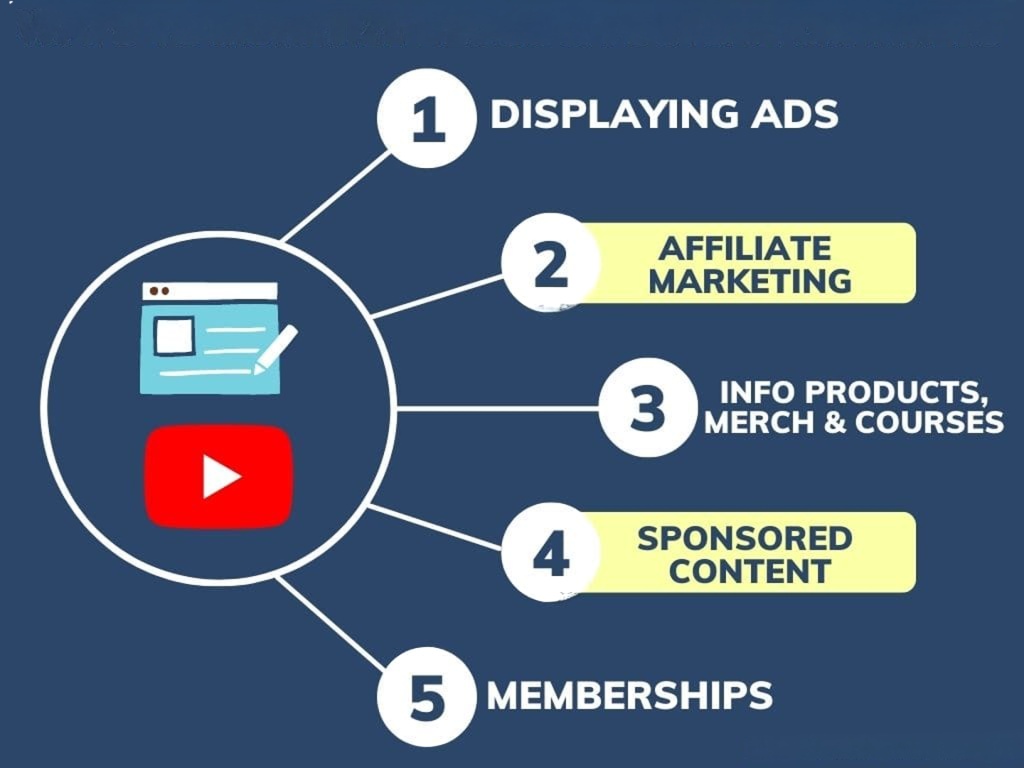
While passion and creativity are the fuel for content creation, financial viability is the engine that sustains it. In 2025, both blogging and YouTube offer a diverse array of monetization pathways, but their income potentials, revenue models, and underlying costs differ significantly. A strategic creator must look beyond the vanity metrics of views and subscribers to understand the true economic realities of each platform.
Diversified Revenue Streams: Beyond AdSense
Relying on a single income stream is a high-risk strategy in the volatile creator economy. Successful creators build a portfolio of revenue sources. While both platforms support core models like affiliate marketing and brand deals, they each have unique strengths.
Core Monetization Models:
- Display Advertising: This is the most common entry-level monetization. For bloggers, it involves placing ads from networks like Google AdSense on their site. For YouTubers, it is managed through the YouTube Partner Program (YPP).
- Affiliate Marketing: Creators earn a commission by promoting products and driving sales through unique tracking links. This is a powerful model for both platforms.
- Sponsored Content (Brand Deals): Brands pay creators to feature their products or services. This is often the most lucrative source of income, with some reports indicating it accounts for up to 70% of total creator revenue.
- Selling Products: This includes selling digital products (e.g., ebooks, online courses, templates) or physical merchandise.
Platform-Specific Strengths:
- Blogging is exceptionally well-suited for affiliate marketing and selling high-ticket digital products. The text-based format allows for natural, contextual integration of affiliate links within detailed reviews and tutorials. Furthermore, the in-depth, authoritative nature of a well-written blog is ideal for building the trust required to sell complex or expensive products like comprehensive online courses.
- YouTube excels at fan-funding and brand awareness. The platform offers a suite of built-in tools for direct audience support, including Super Chat and Super Thanks (one-time tips during livestreams or on videos) and Channel Memberships (recurring subscriptions for exclusive perks). The visual nature of video also makes it a prime channel for high-impact brand deals that rely on demonstrating a product in action.
Income Potential and Benchmarks
The income potential in the creator economy is vast but also starkly stratified.
- The High End: The earnings of top-tier YouTubers are astronomical, with figures like MrBeast ($85 million) and Dhar Mann ($56 million) demonstrating the potential to build multi-million dollar enterprises. However, it is crucial to note that these earnings are primarily driven by their diversified off-platform businesses, not just YouTube ad revenue.
- The Ad Revenue Reality: For the average creator, platform ad revenue is far more modest. The typical YouTube channel earns between $2 and $5 per 1,000 views (a metric known as RPM, or revenue per mille) from AdSense. More optimistic analyses place the average between $10 and $30 per 1,000 ad-supported views. Even at the higher end, this means that generating a full-time income from YouTube ads alone requires a massive and consistent volume of viewership, often in the millions of views per month. While direct comparisons are difficult, some case studies suggest that YouTube’s RPM for ads is generally higher than the RPM for display ads on a blog.
- The $15k Monetization Barrier: Perhaps the most sobering statistic for aspiring creators comes from the 2025 Creator Earnings Report. It reveals a clear “monetization barrier” at the $15,000 annual income mark. More than half of all creators earn less than this amount, and those who manage to cross this threshold appear to experience accelerated income growth through better access to brand deals and increased visibility. This suggests that a significant portion of the creator population struggles to achieve financial viability.
Return on Investment (ROI) and Hidden Costs
A complete financial picture must also account for the investment of time and resources.
- Blogging: The upfront financial cost is low, but the time investment in research, writing, and SEO is substantial. The ROI from blogging is often a long-term play. An evergreen blog post that ranks well in Google can generate passive income from affiliate links and ad revenue for years with little additional effort, making it a highly efficient asset over time.
- YouTube: The potential for higher upfront equipment costs is significant. The “hidden cost” is the immense time commitment required for production. Filming, re-takes, and particularly video editing are notoriously time-consuming processes. The ROI on YouTube can be much faster and more explosive, as a single viral video can generate a massive influx of subscribers and revenue. However, this income can also be less stable and more dependent on the whims of the algorithm.
Ultimately, the most lucrative and resilient creators understand that platform-based monetization is only one piece of the puzzle. A 2025 report from Epidemic Sound highlights a major strategic shift towards direct-to-fan models, with 95% of creators now using them.
Income sources are becoming more evenly distributed across brand partnerships, subscriptions, and merchandise sales, indicating a deliberate move away from a dependency on advertising. This means creators are actively de-risking their businesses by building direct financial relationships with their communities.
Therefore, the choice between blogging and YouTube should be evaluated not just on their native monetization tools, but on which platform better facilitates the building of a loyal, monetizable community that can be leveraged for these higher-value, more stable revenue streams. YouTube is unparalleled for building a large audience at the top of the funnel, while a blog is superior for capturing that audience (via an email list) and selling to them directly at the bottom of the funnel.
Table 3: Monetization Models – A Deep Dive
| Monetization Model | Blogging (Strength/Strategy) | YouTube (Strength/Strategy) | Typical Earning Potential | Setup Difficulty | Passivity Level |
| Display Ads (AdSense/YPP) | Easy to implement. Income scales with traffic. Lower RPM than YouTube but highly passive. | Primary monetization via YPP. Higher RPM. Requires meeting strict eligibility and policy criteria. | Low-Medium (per view). $1-$30 RPM. | Low (Blog), Medium (YT) | High |
| Affiliate Marketing | Excellent. In-text links provide high conversion. Ideal for detailed reviews and “best of” lists. | Good. Links in description and pinned comments. Video demos can drive high intent. | Low-High. 1%-20% commission per sale. | Low | High |
| Brand Deals/Sponsorships | Good. Sponsored posts and reviews. Can build authority with text. | Excellent. High visibility for brands. Video showcases products dynamically. Highest income potential. | High. $100s to $10,000s+ per campaign. | High | Low |
| Digital Products (Courses, Ebooks) | Excellent. Long-form text is ideal for building trust and authority needed for high-ticket sales. | Good. Can use videos as a funnel to a sales page. Harder to convey deep value for high-ticket items in-video. | High. Creator keeps ~90-100% of revenue. | High | High |
| Memberships/Fan Funding | Medium. Requires third-party tools like Patreon or MemberPress. | Excellent. Integrated tools like Channel Memberships, Super Chat, and Super Thanks foster direct fan support. | Low-Medium (per fan). Recurring revenue. | Medium | Medium |
VI. Building a Resilient Creator Business: Blogging vs YouTube – The Omnichannel Imperative
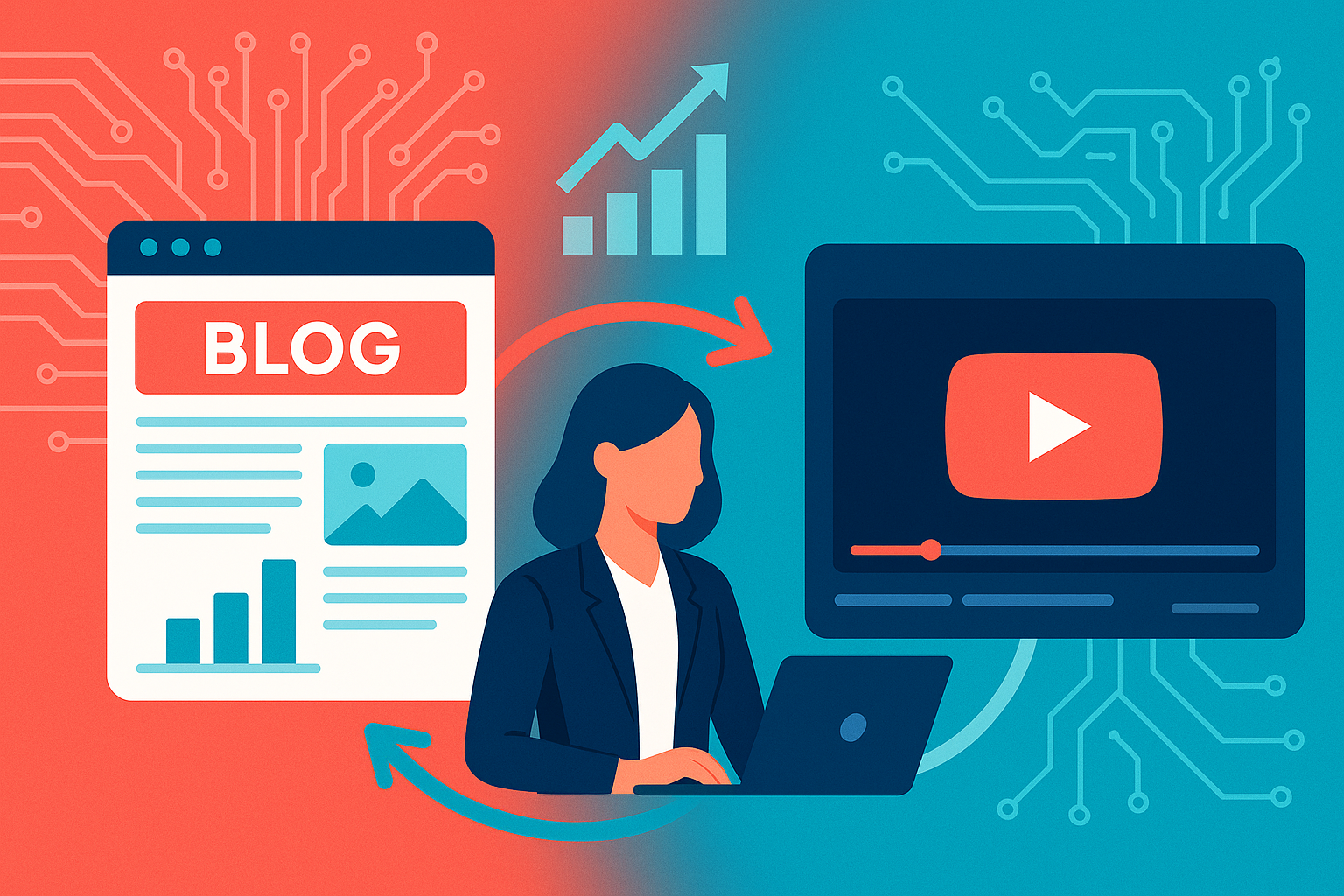
In the dynamic and often precarious creator economy of 2025, long-term success is not achieved by mastering a single platform, but by building a resilient, interconnected brand ecosystem. The debate of “Blogging vs. YouTube” presents a false dichotomy. The most strategic and sustainable approach is an omnichannel one that leverages the unique strengths of both platforms in synergy. This integrated strategy, once prohibitively labor-intensive, is now more feasible than ever thanks to the efficiencies unlocked by AI.
The Power of Evergreen Content
The foundation of a resilient creator business is evergreen content—material that remains relevant and valuable to an audience over a long period, independent of fleeting trends. This type of content acts as a durable asset that generates passive traffic, leads, and income for years after its initial publication.
- Blogging’s Evergreen Advantage: Written content is exceptionally well-suited for creating evergreen assets. A comprehensive, well-researched blog post optimized for search engines can secure a high rank on Google and attract a steady stream of highly motivated traffic for years. Topics like in-depth tutorials, foundational guides, and detailed resource lists form the backbone of many successful blogs.
- YouTube’s Evergreen Potential: While often associated with viral, trend-driven content, YouTube also possesses immense evergreen potential. “How-to” videos, product reviews, educational explainers, and timeless case studies can accumulate views steadily over time through both YouTube’s and Google’s search functions. A creator who builds a library of such videos establishes a reliable baseline of viewership and ad revenue that is not dependent on the performance of their latest upload.
The Synergy Strategy: Why “Both” is the Winning Answer
Instead of viewing the platforms as competitors for a creator’s time, the optimal strategy treats them as complementary components of a single content engine. This creates a virtuous cycle where each platform amplifies the other.
Workflow Synergy: The content itself can be efficiently repurposed between formats, dramatically reducing the total workload.
- From Blog to Video: A well-structured, detailed blog post is a perfect script or a comprehensive outline for a YouTube video. The research and organization are already complete, streamlining the video pre-production process and ensuring the content is thorough and valuable.
- From Video to Blog: A YouTube video can be transcribed (often with AI tools) and then expanded into a rich, long-form blog post. The written format allows for the inclusion of more detail, supplementary data, relevant links, and deeper SEO optimization that isn’t possible in a video, creating a new, valuable asset from existing work.
Audience and SEO Synergy: The cross-promotion between a blog and a YouTube channel creates a powerful flywheel for audience growth and search visibility.
- Embedding relevant YouTube videos directly into blog posts is a proven strategy to increase reader engagement and “time-on-page.” These are strong positive signals to Google’s ranking algorithm, which can boost the blog post’s SEO performance.
- The blog can serve as a powerful tool to drive traffic to the YouTube channel. Conversely, the YouTube video can include calls-to-action that direct viewers back to the blog to download a resource, sign up for an email list, or click a high-converting affiliate link. This captures the audience from the rented land of YouTube and brings them to the owned asset of the blog.
The AI-Powered Omnichannel Future
Historically, the primary barrier to adopting a “both” strategy was the immense workload involved in producing high-quality content in two distinct formats. In 2025, AI has largely dismantled this barrier. AI-powered tools can now:
- Transcribe a YouTube video into accurate text in minutes, providing the raw material for a blog post.
- Summarize a long-form blog post into a concise script or a series of talking points for a video.
- Analyze a video or article and automatically identify the most engaging moments or key quotes, then reformat them into short-form videos (Reels, Shorts) or social media graphics (carousels, threads) to promote the core content across all channels.
By automating the most time-consuming aspects of content repurposing, AI makes a sophisticated, omnichannel presence an achievable goal for individual creators and small teams, not just large media companies.
Final Strategic Recommendations
The decision of where to begin and how to scale depends on a creator’s individual circumstances, but the ultimate goal should be a diversified, resilient brand.
For New Creators: The initial choice should be guided by an honest assessment of your innate skills and the dominant content preference within your chosen niche. If you are a natural writer and your niche values detailed, searchable information (e.g., finance, coding, legal), start with a blog. If you are a charismatic performer and your niche is highly visual (e.g., travel, fitness, crafts), start with a YouTube channel. The key is to focus on mastering one platform first to build an initial audience and momentum before expanding.
For Established Creators: The path forward is diversification.
- If you have a successful blog: Your priority should be to identify your top-performing evergreen articles and begin repurposing them into YouTube videos. This will allow you to tap into a massive new audience segment that prefers video, deepen the engagement with your existing audience by providing multimedia content, and benefit from the powerful SEO of video in Google’s search results.
- If you have a successful YouTube channel: Your most critical strategic move is to start a blog. This is not about abandoning video; it is about building an owned asset that you control. A blog serves as the central hub for your brand, a place to capture your audience via an email list (your most valuable asset), and a platform to deploy monetization strategies like affiliate marketing and digital product sales more effectively than is possible in a YouTube description box.
The ultimate objective for any serious creator in 2025 is to build a brand that transcends any single platform. YouTube is an unparalleled engine for building reach and awareness. A blog is the ultimate tool for building a direct relationship with that audience and converting it into a sustainable, sovereign business. Together, powered by the efficiencies of AI, they form the foundation of a truly resilient creator enterprise.
If you enjoyed this article, then you’ll love Zalvis's WordPress Hosting platform. Turbocharge your website and get 24/7 support from our veteran team. Our world-class hosting infrastructure focuses on auto-scaling, performance, and security. Let us show you the Zalvis difference! Check out our plans.
